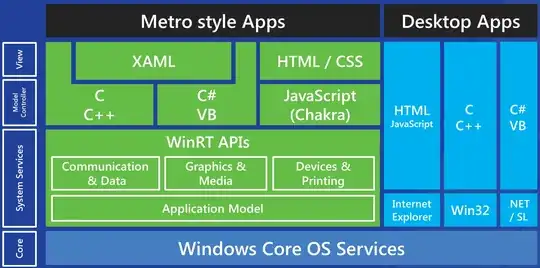From what I've seen, WinRT is actually an "unmanaged" software layer based on native COM objects, so I would NOT expect to see a big performance impact when invoking the APIs. In fact, it's quite likely that these will perform better than .NET apps on the CLR, as they are likely to be "closer to the metal" than pure .NET apps.

Note also that you can implement invoke WinRT APIs from .NET apps (or, as they want the buzz to pick up and attract web hipsters, in shiny HTML5 + JavaScript), but are free to implement your application entirely in C++ if you prefer and are concerned about additional layers.
WinRT is essentially a COM-based API, although relying on an enhanced COM.
[...] WinRT allows relatively easy interfacing from
multiple languages, [...] it's essentially an unmanaged,
native API. This common [.NET-based ECMA 335] metadata format
allows for significantly less overhead when invoking WinRT from
.NET applications compared to a P/Invoke, and much simpler syntax.
- From Wikipedia's WinRT (emphasis mine)
Also, consider looking at the C++/CX Component Extensions Language:
The new C++/CX (Component Extensions) language,
which borrows some C++/CLI syntax, allows the authoring and consumption of
WinRT components with less glue visible to the programmer compared to
classic COM programming in C++ [...]. Regular C++ [...]
can also be used to program with WinRT components, with [a] library called
Windows Runtime C++ Template Library (WRL), which is
similar in purpose to what Active Template Library provides for COM.
The MSDN Library, however, recommends using C++/CX instead of WRL.
- From Wikipedia's WinRT (emphasis mine)
The Guardian also provides an interesting article on the apparent rebuff of .NET in favor of C++ to develop WinRT-based apps.
The same article points to a great explanation of WinRT compared to Silverlight and WPF on StackOverflow.com.
Regarding your other points, WinRT in itself certainly doesn't limit you or prevent you from interfacing to a database or AD. It just doesn't make it easy, and the question is more how you want to do it.
